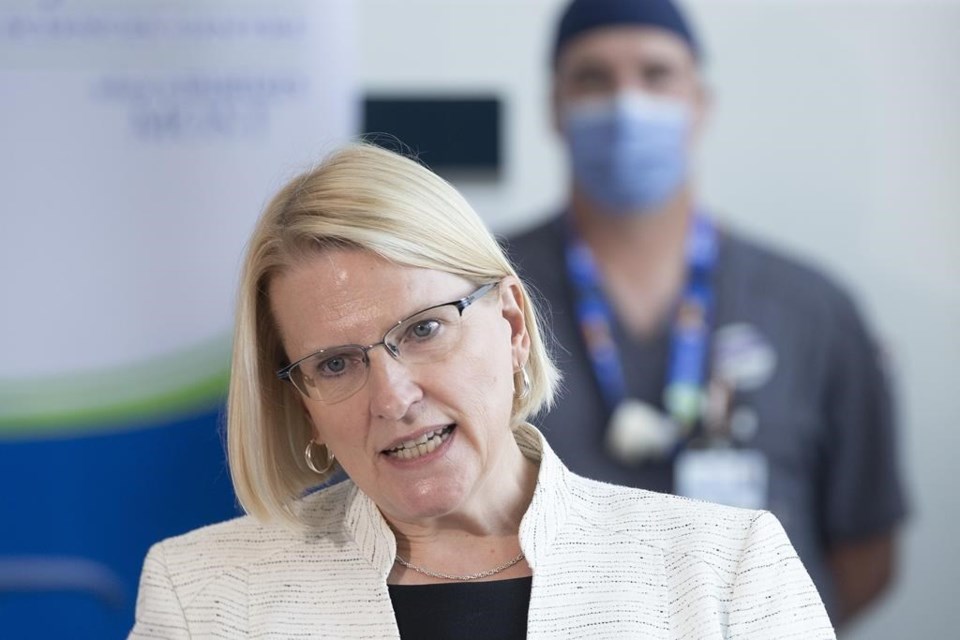TORONTO — Ontario has reached a deal with doctors that saves specialists who treat patients virtually from having their fees slashed, but leaves other physicians out in the cold, The Canadian Press has learned.
In a memo to its members Friday, the Ontario Medical Association, which represents the province's doctors, said it reached the deal after a months-long deadlock.
The province is set to revamp its fees for virtual care on Dec. 1 after pushing an Oct. 1 deadline because the Ministry of Health was unable to make the changes to its billing program in time.
"While the ministry did not agree with all of the concerns that our members raised, this agreement mitigates many of the unintended consequences and will help physicians to continue to serve their patients with virtual care," wrote the medical association's board chair Dr. Cathy Faulds.
The province is set to introduce a number of permanent changes to its virtual care program that would see the fee paid to doctors cut to $15 from $37 per patient visit.
Addictions doctors across the province recently received a deal sparing them of cuts to a $15 bonus on top of the $37 fee – they had warned that the cuts could have seen upwards of 50,000 patients on opioid agonist therapy lose access to treatment unless they went in person.
"This deal will ensure that Ontarians will continue to have access to the care they need, when they need it," said Hannah Jensen, a spokeswoman for the Minister of Health.
"Virtual care is intended to complement in-person care not replace it. This approach has resulted in meaningful changes for virtual care that ensures a positive patient-physician relationship is fostered."
Under the previous proposed changes to virtual care, patients would have had to see a doctor once in person in a two-year period in order for the doctor to receive the same rate for subsequent remote visits.
The OMA had challenged the changes after an outcry by doctors who use virtual care, which allowed them to greatly expand their reach across Ontario.
Under the new deal, patients can continue to get virtual care from those doctors without an in-person visit so long as a consultation, which can be done remotely, is done every 24 months.
"The prospect of a requirement that patients see a specialist or GP in person once every 24 months to be able to continue to receive virtual care had been the source of significant concern," Faulds wrote.
"If this had not been resolved, it would have created significant barriers to access, including for Indigenous people and people with disabilities, and in rural and remote areas, where patients experience difficulty attending in-person visits."
The deal only applies to specialists and family physicians with a special ministry-approved designation.
"The OMA recognizes other unintended consequences for access to care because of the new virtual care framework, especially for patients of physicians who do not have a GP focused practice and for patients of specialist physicians who practice as a group," Faulds wrote.
She also said by "agreeing to the changes outlined above, the Ministry of Health will not accept any further negotiations relating to any other unintended consequences of the new virtual care framework prior to the next round of formal bargaining."
But the ministry remains "willing to discuss areas of concern" at a special committee, Faulds wrote.
Dr. Michael Verbora, a physician based in Toronto who sees many of his patients virtually, was disappointed by the news.
Verbora's team treats 50,000 patients all over Ontario -- many in far-flung parts -- for serious illnesses such as cancer and epilepsy and palliative care patients with cannabinoid therapy.
He said he's had great results working with children who have cancer to help with their appetite and the side-effects of chemotherapy.
But Verbora does not have a specialist designation, so he is excluded from the deal, which means his payments will be cut by upwards of 70 per cent.
"The government is making it impossible to run the clinic," he said. "It's really disappointing for me and for my patients -- they don't really know what to do."
About 1,000 children and thousands of elderly patients will either have to figure out how to see him and other doctors in his practice in person or lose access to medical cannabis, he said.
Many of those children have epilepsy, he said, and are referred to him from pediatric neurologists at the Hospital for Sick Children because there are so few doctors practising in the area.
"These are complex patients who require follow up and careful treatment," he said.
Verbora said two physicians have already left his clinic because they couldn't make their practice work when the new fees are put into place.
He said he's going to try to see as many patients as possible who can get to Toronto, but he now must consider options in the private health-care system to earn a living.
"I can find other work, but what will my patients do?' he said.
This report by The Canadian Press was first published Oct. 21, 2022.
Liam Casey, The Canadian Press
Note to readers: This is a corrected story. An earlier version carried incorrect wording to explain why Dr. Michael Verbora is excluded from the deal.

